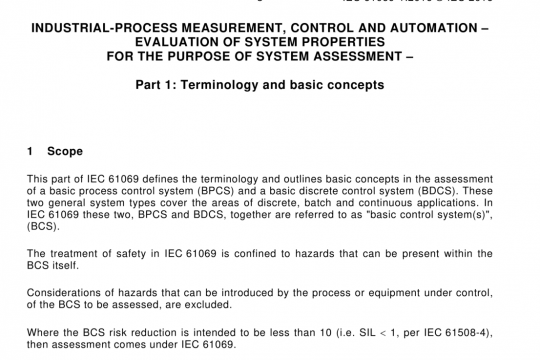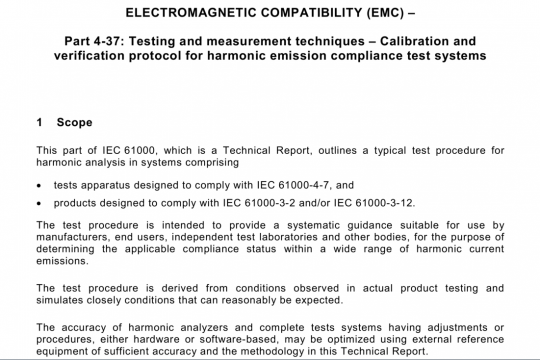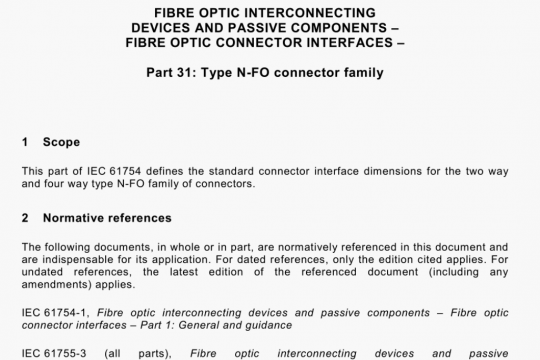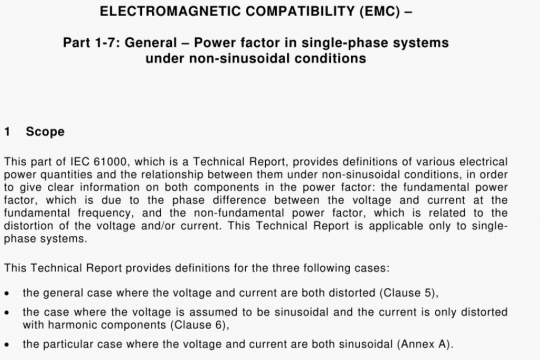IEC TS 62738 pdf free download
IEC TS 62738 pdf free download.Ground-mounted photovoltaic power plants – Design guidelines and recommendations.
5 PV array system configuration
5.1 General
This clause discusses PV array earthing, control, layout and mechanical configurations found in PV power plants.
5.2 Earthing configurations
5.2.1 General
Considerations for earthing a PV array are addressed in this clause. The requirements of manufacturers of PV modules and manufacturers of power conversion equipment (PCE) to which the PV array is connected shall be taken into account in determining the allowable or required system earthing arrangements.
5.2.2 Use of un-earthed d.c. circuits
When installed with a residual current monitoring system and/or with isolation resistance detection, PV systems with un-earthed d.c. arrays offer robust earth fault protection. A failure in any cable (positive or negative), causing a short circuit from the cable to an earthed surface results only in a shift of the array voltage reference from a floating state to an earth-referenced state. It does not create a closed circuit for fault current to flow, and therefore does not present a fire hazard. Un-earthed d.c. circuits are also a requirement where simple separation or isolation from an earthed a.c. system is not provided by the inverter or a transformer.
5.2.3 Use of high-ohmic earthed d.c. circuits
High-ohmic earthed systems may be used in plants where operators want to achieve some of the benefits of an un-earthed or floating system while still maintaining an array voltage reference to ground to prevent potential induced degradation (PID). Resistance values are set to limit fault current to a target level (below 300 mA for example) in case of a hard fault occurring on the unreferenced d.c. circuit pole. This significantly reduces the arcing and fire causing currents that can occur with grounded systems, specifically those without supplemental high-sensitive ground fault detection.
5.2.4 Use of functionally earthed d.c. circuits
Protective earthing of any of the conductors of the PV array is not permitted. Earthing of one of the conductors of the PV array for functional reasons is allowed through internal connections inherent in the PCE or other earth fault protective device if designed and qualified for this configuration. Functionally earthed d.c. array based systems are sometimes used to prevent module PID.
5.3 Array electrical diagrams
5.3.1 General
Figure 1 through Figure 4 show the typical array electrical configurations for PV power plants. Typical power plants employ multiple array-PCE “blocks” resembling the configurations shown in Figure 1 through Figure 3. Power plants may also employ string inverter configurations as shown in Figure 4, or module level micro-inverters.
5.5.3 Single axis tracking arrays
Single axis tracking arrays employ structures that rotate PV modules along a single axis to follow the sun’s path. Most common for power plants is the horizontal N-S axis tracker, which rotates the modules from east to west throughout the course of a day along an axis that is horizontal relative to the ground plane. Single axis trackers may also be tilted (toward the equator) for greater energy capture.
5.5.4 Two-axis tracking arrays
Two-axis tracking arrays employ structures that rotate PV modules along both the N-S and
E-W axes, thereby aligning the array to the direct beam angle of the sun throughout the day.
5.5.5 Concentrating PV arrays
Concentrating PV arrays are those that incorporate PV modules or cells that utilize lenses or other focal apparatus to concentrate greater sunlight on the cells. Concentrating arrays almost universally use either a 1-axis or 2-axis tracking mechanism. For the purposes of this document, all requirements pertaining to non-concentrating flat-plate arrays shall apply to concentrating PV arrays. Manufacturer instructions shall be followed to address any differences in calculation of system voltages, currents, and installation methods.IEC TS 62738 pdf download.




